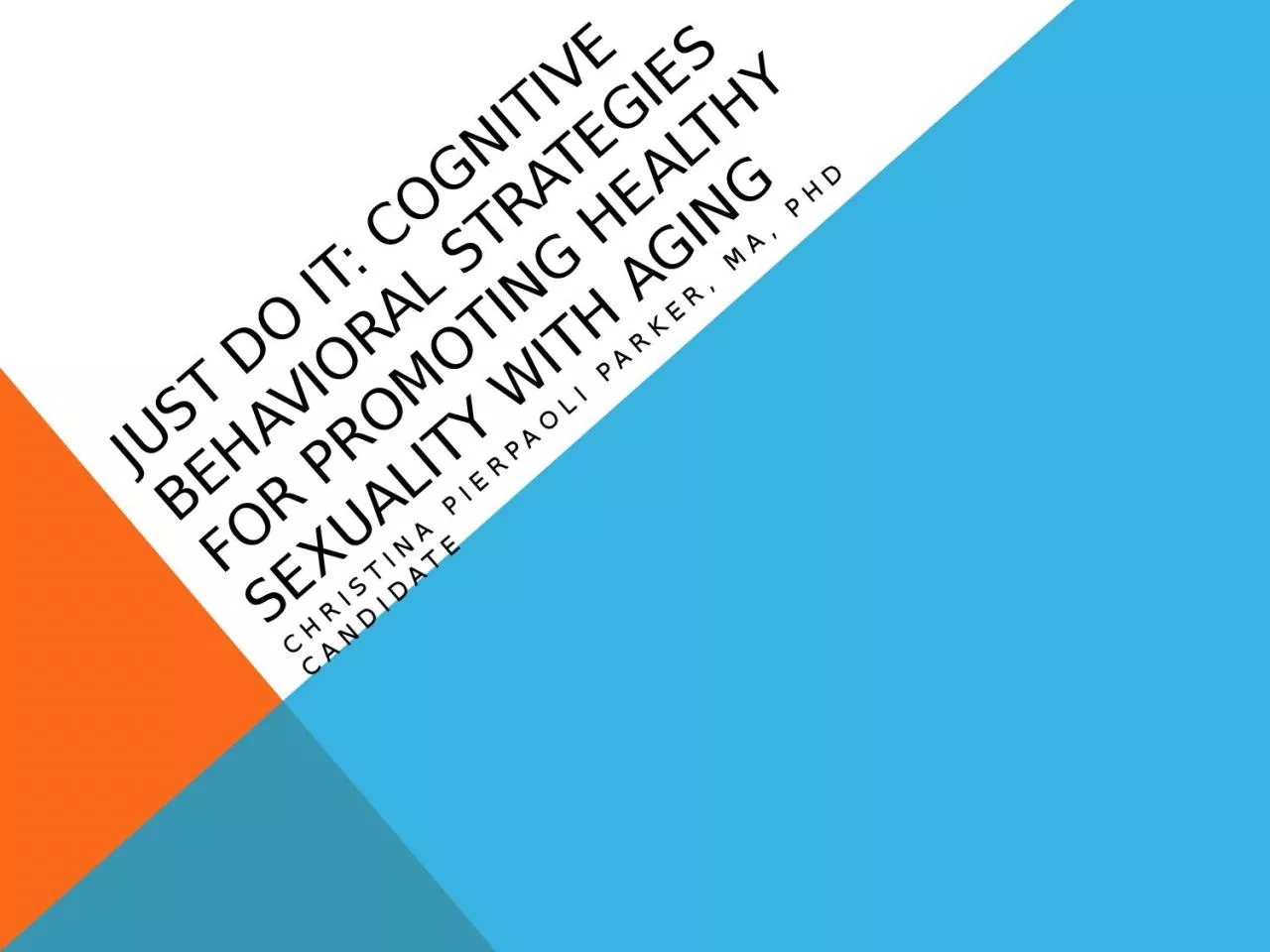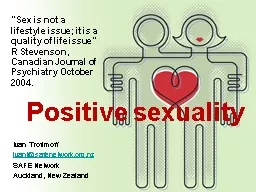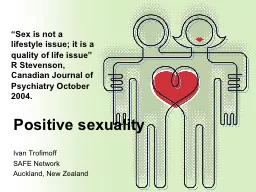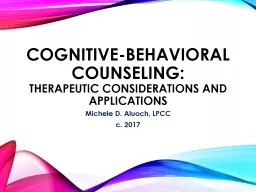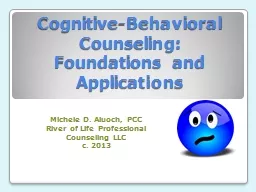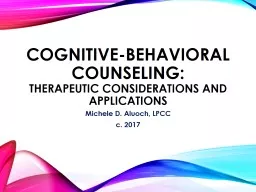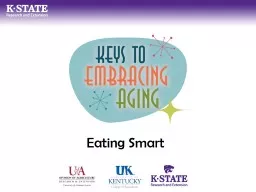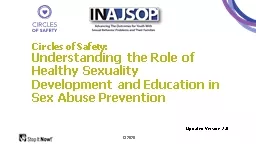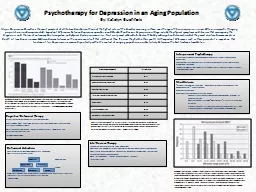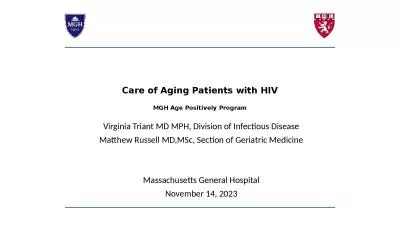PPT-Just do it: Cognitive Behavioral Strategies for Promoting Healthy Sexuality With Aging
Author : belinda | Published Date : 2022-06-18
Christina Pierpaoli Parker MA Phd Candidate Objectives Describe the relationships between thoughts feelings and health behavior Learn and apply specific cognitive
Presentation Embed Code
Download Presentation
Download Presentation The PPT/PDF document "Just do it: Cognitive Behavioral Strateg..." is the property of its rightful owner. Permission is granted to download and print the materials on this website for personal, non-commercial use only, and to display it on your personal computer provided you do not modify the materials and that you retain all copyright notices contained in the materials. By downloading content from our website, you accept the terms of this agreement.
Just do it: Cognitive Behavioral Strategies for Promoting Healthy Sexuality With Aging: Transcript
Christina Pierpaoli Parker MA Phd Candidate Objectives Describe the relationships between thoughts feelings and health behavior Learn and apply specific cognitive amp behavioral skills to promote successful aging amp healthy safe sexuality . Military Child Education Coalition . National Training Seminar. Washington DC. July . 29, 2014. Jeff Bergmann, . PhD, . LPC, NCC. Clinical . Psychology, . George Mason University. Lieutenant Colonel, US Army . Struggling . to talk about sexuality with your sons and daughters? . This workshop . will . provide parents with . information, strategies, and tips on sexuality, social skills, and behavior to meet the unique needs of . Ivan Trofimoff . ivant@safenetwork.org.nz. SAFE Network. Auckland, New Zealand . “Sex is not a lifestyle issue; it is a quality of life issue” R Stevenson, Canadian Journal of Psychiatry October 2004. . Ivan Trofimoff . SAFE . Network. Auckland, New Zealand . “Sex is not a lifestyle issue; it is a quality of life issue” R Stevenson, Canadian Journal of Psychiatry October 2004. . Positive psychology. Therapeutic considerations and Applications. Michele D. Aluoch, LPCC. c. 2017. Depressive . Disorders. Depressive Episode. . 5 or more in 2 week period. Change from previous functioning. Either: depressed mood or loss of . Insert Agency Logo Here. Saving $$ for Our Community: Helping Children & Schools. PATHS. . ®. D. elivered 1-2 . times a week by teachers in the . classroom. . 20-30 minute lessons. Enrichment activities . : Foundations . and Applications. Michele D. . Aluoch. , PCC. River of Life . P. rofessional Counseling LLC. c. 2013. Depressive Disorders- DSM IV-TR. Depressive Episode. . 5 or more in 2 week period. Therapeutic considerations and Applications. Michele D. Aluoch, LPCC. c. 2017. Depressive . Disorders. Depressive Episode. . 5 or more in 2 week period. Change from previous functioning. Either: depressed mood or loss of . Practice Being Safe. Know Your Health Numbers. Stress Management. Financial Affairs. Sleep. Taking Time for You. Positive Attitude. Eating . Smart. Physical . Activity . Brain Activity. Social Activity. Updated Version 2.0 . Agenda – Objectives. Define the scope and impact of sex abuse. Reflect on professional caregiver’s role in prevention. Describe key steps of prevention. Understand safety planning as a prevention tool. Population. By: Katelyn Buchholz. Major Depressive Disorder is the most prevalent of all lifetime disorders with one of the highest rates of the disorder occurring in those over the age of 75 . (. Rothermund. Advisory Council Meeting. James Fuccione – Senior Director. Wednesday, August 2, . 2017. The work of the Massachusetts Healthy Aging Collaborative is supported in part by Tufts Health Plan Foundation.. Lihong Wang. Department of Psychiatry. 09/05/2018. Overview. Neural Compensatory Activation & Cognitive Reserve. Semi-quantitative Measure of Neural Compensation. Physical Exercise & Neural Compensatory Activation . MGH Age Positively Program. Virginia Triant MD MPH, Division of Infectious Disease. Matthew Russell . MD,MSc. , Section of Geriatric Medicine. Massachusetts General Hospital. November 14, 2023. Objectives.
Download Document
Here is the link to download the presentation.
"Just do it: Cognitive Behavioral Strategies for Promoting Healthy Sexuality With Aging"The content belongs to its owner. You may download and print it for personal use, without modification, and keep all copyright notices. By downloading, you agree to these terms.
Related Documents

